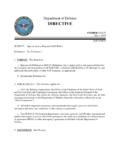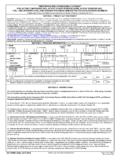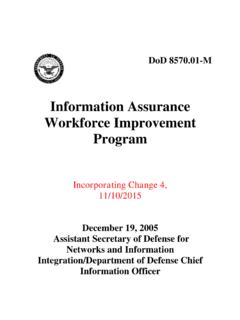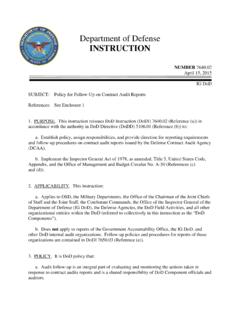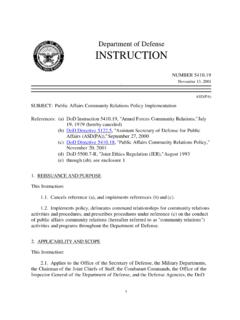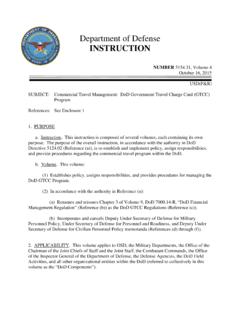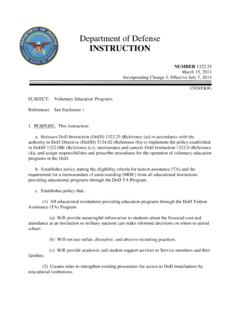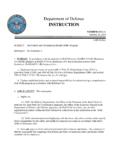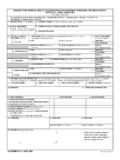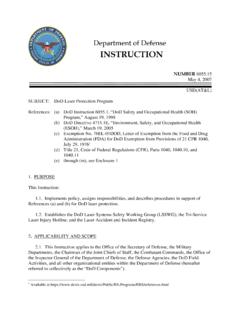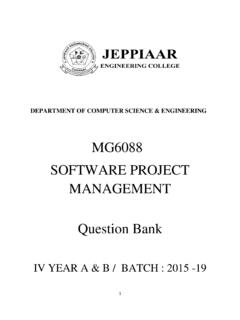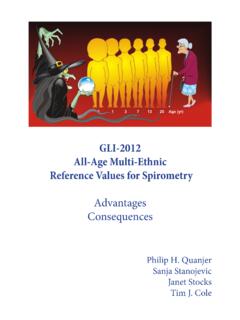Transcription of DODI 5200.44, November 5, 2012, Incorporating Change 3 on ...
1 Department of Defense INSTRUCTION NUMBER November 5, 2012 Incorporating Change 2, July 27, 2017 DoD CIO/USD(AT&L) SUBJECT: Protection of Mission Critical Functions to Achieve Trusted Systems and Networks (TSN) References: See Enclosure 1 1. PURPOSE. This Instruction, in accordance with the authorities in DoD Directive (DoDD) (Reference (a)) and DoDD (Reference (b)): a. Establishes policy and assigns responsibilities to minimize the risk that DoD s warfighting mission capability will be impaired due to vulnerabilities in system design or sabotage or subversion of a system s mission critical functions or critical components, as defined in this Instruction, by foreign intelligence, terrorists, or other hostile elements. b. Implements the DoD s TSN strategy, described in the Report on Trusted Defense Systems (Reference (c)) as the Strategy for Systems Assurance and Trustworthiness, through Program Protection and cybersecurity implementation to provide uncompromised weapons and information systems.
2 The TSN strategy integrates robust systems engineering, supply chain risk management (SCRM), security, counterintelligence, intelligence, cybersecurity, hardware and software assurance, and information systems security engineering disciplines to manage risks to system integrity and trust. c. Incorporates and cancels Directive-Type Memorandum 09-016 (Reference (d)). d. Directs actions in accordance with the SCRM implementation strategy of National Security Presidential Directive 54/Homeland Security Presidential Directive 23 (Reference (e)), section 806 of Public Law 111-383 (Reference (f)), DoDD (Reference (g)), DoDI (Reference (h)), DoDI (Reference (i)), Committee on National Security Systems Directive No. 505 (Reference (j)), and National Institute for Science and Technology Special Publication 800-161 (Reference (k)). 2. APPLICABILITY. This Instruction applies to: a.
3 OSD, the Military Departments, the Office of the Chairman of the Joint Chiefs of Staff (CJCS) and the Joint Staff, the Combatant Commands, the Office of the Inspector General of the DoDI , November 5, 2012 Change 2, 07/27/2017 2 Department of Defense, the Defense Agencies, the DoD Field Activities, and all other organizational entities within the DoD (hereinafter referred to collectively as the DoD Components ). b. The United States Coast Guard. The United States Coast Guard will adhere to DoD cybersecurity requirements, standards, and policies in this issuance in accordance with the direction in Paragraphs 4a, b, c, and d of the Memorandum of Agreement Between the Department of Defense and the Department of Homeland Security (Reference (z)). bc. All DoD information systems and weapons systems that are or include systems described in subparagraphs (1) through (3) (hereinafter referred to collectively as applicable systems ): (1) National security systems as defined by section 3552 of title 44, United States Code ( ) (Reference (l)).
4 Although DoD s Non-classified Internet Protocol Router Network (NIPRNet) and its enclaves are considered national security systems in accordance with CJCS Instruction (Reference (m)), they are exempted from this instruction due to the need to prioritize use of limited TSN enterprise capabilities unless paragraph (2) or (3) applies; (2) Any DoD system with a high impact level for any of the three security objectives (confidentiality, integrity, and availability) in accordance with the system categorization procedures in DoDI (Reference (n)); or (3) Other DoD information systems that the DoD Component s acquisition executive or chief information officer, or designee, determines are critical to the direct fulfillment of military or intelligence missions, which may include some connections to or enclaves of NIPRNet and some industrial control cd. All mission critical functions and critical components within applicable systems identified through a criticality analysis, including spare or replacement parts.
5 For the purposes of this Instruction, only information and communications technology (ICT) components in applicable systems shall be considered for the processes described herein until this Applicability section is modified in accordance with Enclosure 2, paragraph 3. DEFINITIONS. See Glossary. 4. POLICY. It is DoD policy that: a. Mission critical functions and critical components within applicable systems shall be provided with assurance consistent with criticality of the system, and with their role within the system. b. All-source intelligence analysis of suppliers of critical components shall be used to inform risk management decisions. DoDI , November 5, 2012 Change 2, 07/27/2017 3 c. Risk to the trust in applicable systems shall be managed throughout the entire system lifecycle. The application of risk management practices shall begin during the design of applicable systems and prior to the acquisition of critical components or their integration within applicable systems, whether acquired through a commodity purchase, system acquisition, or sustainment process.
6 Risk management shall include TSN process, tools, and techniques to: (1) Reduce vulnerabilities in the system design through system security engineering. (2) Control the quality , configuration, software patch management, and security of software , firmware, hardware, and systems throughout their lifecycles, including components or subcomponents from secondary sources. Employ protections that manage risk in the supply chain for components or subcomponent products and services ( , integrated circuits, field-programmable gate arrays (FPGA), printed circuit boards) when they are identifiable (to the supplier) as having a DoD end-use. (3) Detect the occurrence of, reduce the likelihood of, and mitigate the consequences of unknowingly using products containing counterfeit components or malicious functions in accordance with DoDI (Reference (o) ). (4) Detect vulnerabilities within custom and commodity hardware and software through rigorous test and evaluation capabilities, including developmental, acceptance, and operational testing.
7 (5) Implement tailored acquisition strategies, contract tools, and procurement methods for critical components in applicable systems, to include covered procurement actions in accordance with Reference (f). (6) Implement item unique identification (IUID) for national level traceability of critical components in accordance with DoDI (Reference (p)). d. The identification of mission critical functions and critical components as well as TSN planning and implementation activities, including risk acceptance as appropriate, shall be documented in the Program Protection Plan (PPP) in accordance with Reference (h) and in relevant cybersecurity plans and documentation in accordance with Reference (i). e. In applicable systems, integrated circuit-related products and services shall be procured from a trusted supplier using trusted processes accredited by the Defense Microelectronics Activity (DMEA) when they are custom-designed, custom-manufactured, or tailored for a specific DoD military end use (generally referred to as application-specific integrated circuits (ASIC)).
8 5. RESPONSIBILITIES. See Enclosure 2. 6. RELEASABILITY. Cleared for public release. This Instruction is available on the DoD Issuances Website at on the Directives Division Website at DoDI , November 5, 2012 Change 2, 07/27/2017 4 7. EFFECTIVE DATE. This Instruction is effective November 5, 2012 . Teresa M. Takai Frank Kendall DoD Chief Information Officer Under Secretary of Defense for Acquisition, Technology, and Logistics Enclosures 1. References 2. Responsibilities Glossary DoDI , November 5, 2012 Change 2, 07/27/2017 ENCLOSURE 1 5 ENCLOSURE 1 REFERENCES (a) DoD Directive , Under Secretary of Defense for Acquisition, Technology, and Logistics (USD(AT&L)), December 9, 2005, as amended (b) DoD Directive , DoD Chief Information Officer (DoD CIO), November 21, 2014 (c) Report on Trusted Defense Systems in response to the National Defense Authorization Act for Fiscal Year 2009, December 22, 20091 (d) Directive-Type Memorandum 09-016, Supply Chain Risk Management (SCRM) to Improve the Integrity of Components Used in DoD Systems, March 25, 2010 (hereby cancelled) (e) National Security Presidential Directive 54/Homeland Security Presidential Directive 23, Cybersecurity Policy, January 8, 20082 (f)
9 Section 806 of Public Law 111-383, The National Defense Authorization Act for Fiscal Year 2011, January 7, 2011 (g) DoD Directive , The Defense Acquisition System, May 12, 2003 (h) DoD Instruction , Operation of the Defense Acquisition System, January 7, 2015, as amended (i) DoD Instruction , Cybersecurity, March 14, 2014 (j) Committee on National Security Systems Directive No. 505, Supply Chain Risk Management (SCRM), March 7, 20123 (k) National Institute for Science and Technology Special Publication 800-161, Supply Chain Risk Management Practices for Federal Information Systems and Organizations, April 2015 (l) Section 3552, title 44, United States Code (m) Chairman of the Joint Chiefs of Staff Instruction , Defense Information Systems Network (DISN) Responsibilities, January 24, 2012 (n) DoD Instruction , Risk Management Framework (RMF) for DoD Information Technology (IT), March 12, 2014, as amended (o) DoD Instruction , DoD Counterfeit Prevention Policy, April 26, 2013 (p) DoD Instruction , Item Unique Identification (IUID) Standards for Tangible Personal Property, September 3, 2015 ( q) Defense Federal Acquisition Regulation Supplement, current edition4 (r) Defense Acquisition Guidebook, current edition5 (s)
10 Section 937 of Public Law 113-66, The National Defense Authorization Act for Fiscal Year 2014, December 26, 2013 (t) Policy Memorandum 15-001 Joint Federated Assurance Center (JFAC) Charter, February 9, 20156 1 Available to authorized users by request from the Office of the USD(AT&L). 2 Available to authorized users by request from the National Security Council. 3 Available to authorized users by request from the Committee on National Security Systems. 4 Available at 5 Available at 6 Available at DoDI , November 5, 2012 Change 2, 07/27/2017 ENCLOSURE 1 6 (u) DoD Instruction , Counterintelligence (CI) Activities Supporting Research, Development, and Acquisition (RDA), June 8, 2011, as amended (v) Supply Chain Risk Management (SCRM) Program Office, Trusted Mission Systems and Networks Directorate, Key Practices and Implementation Guide for the DoD Comprehensive National Cybersecurity Initiative 11 - Supply Chain Risk Management Pilot Program, February 25, 20107 (w) Section 11101 of t itle 40, United States Code (x) Committee on National Security Systems Instruction No.
